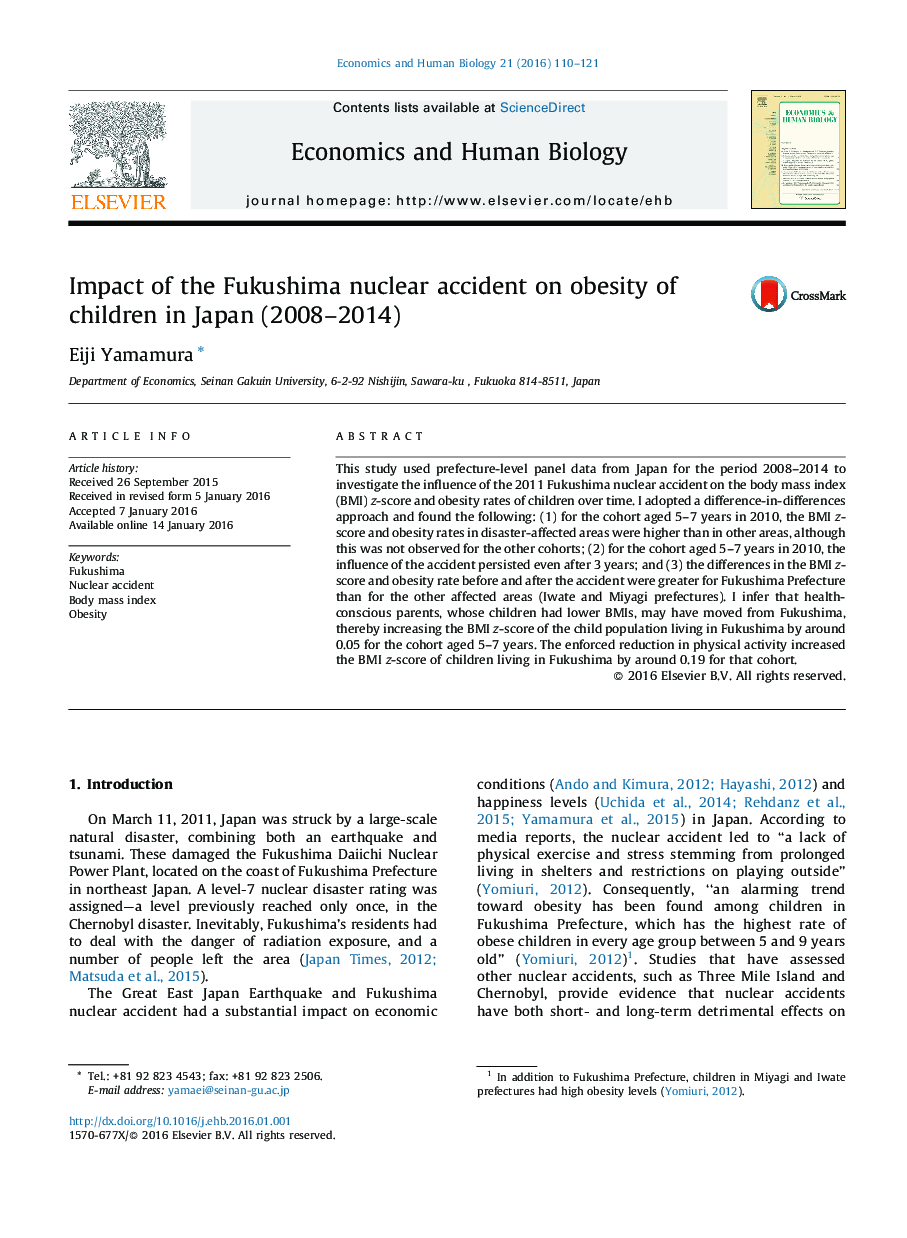| Article ID | Journal | Published Year | Pages | File Type |
|---|---|---|---|---|
| 5056857 | Economics & Human Biology | 2016 | 12 Pages |
â¢We studied the effect of the 2011 Fukushima nuclear accident on childhood obesity.â¢A difference-in-differences approach was used.â¢For cohorts aged 5-7, obesity was higher in damaged areas than in other areas.â¢For cohorts aged 5-7, the influence of the accident persisted, even after 3 years.â¢The increase in obesity after the accident was greater in Fukushima than elsewhere.
This study used prefecture-level panel data from Japan for the period 2008-2014 to investigate the influence of the 2011 Fukushima nuclear accident on the body mass index (BMI) z-score and obesity rates of children over time. I adopted a difference-in-differences approach and found the following: (1) for the cohort aged 5-7 years in 2010, the BMI z-score and obesity rates in disaster-affected areas were higher than in other areas, although this was not observed for the other cohorts; (2) for the cohort aged 5-7 years in 2010, the influence of the accident persisted even after 3 years; and (3) the differences in the BMI z-score and obesity rate before and after the accident were greater for Fukushima Prefecture than for the other affected areas (Iwate and Miyagi prefectures). I infer that health-conscious parents, whose children had lower BMIs, may have moved from Fukushima, thereby increasing the BMI z-score of the child population living in Fukushima by around 0.05 for the cohort aged 5-7 years. The enforced reduction in physical activity increased the BMI z-score of children living in Fukushima by around 0.19 for that cohort.
